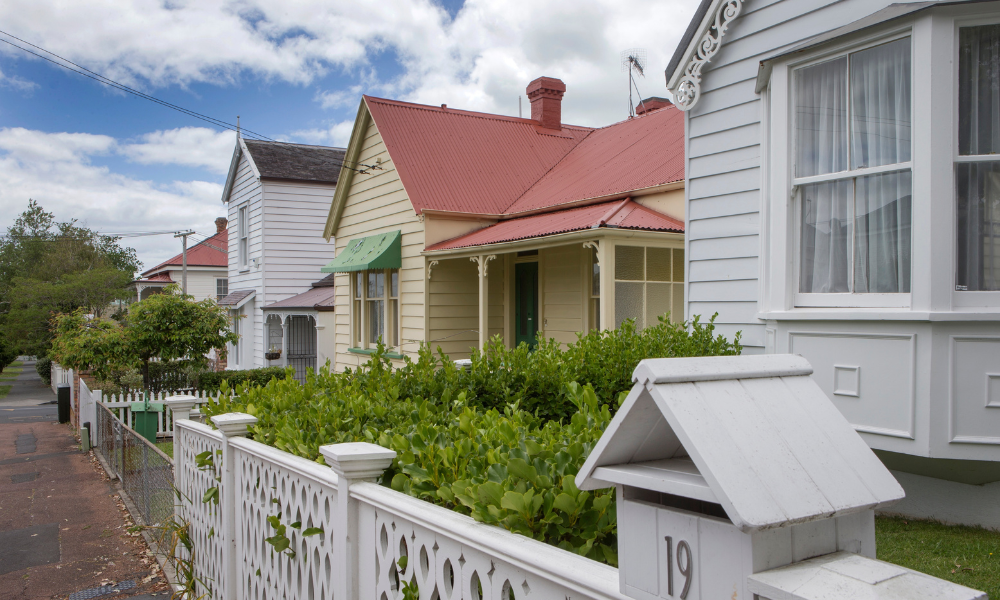The decline amounts to $32,200

New Zealand’s property market ended 2024 with a continued decline in home values, as the national median dropped to $803,624 in December, reflecting a 3.9% ($32,200) year-on-year decrease.
While values remain 16.2% higher than pre-COVID levels, they are still 17.6% below the peak seen after the pandemic. This downward trend, which persisted throughout the year, illustrates the ongoing challenges facing the housing market.
Regionally, December saw a mixed performance. Some areas experienced slight improvements, while others continued to face downward pressure.
Kirikiriroa Hamilton saw a 1% rise, Tauranga increased by 0.4%, and Ōtepoti Dunedin saw a modest 0.3% gain. Ōtautahi Christchurch held steady, with no change in values, while Tāmaki Makaurau Auckland and Te Whanganui-a-Tara Wellington experienced declines of 0.4% and 0.8%, respectively.
The variation between regions highlights the complex nature of the property market and the impact of local factors, such as supply levels and economic conditions.
Kelvin Davidson, chief property economist at CoreLogic NZ, noted that December’s drop in national values accurately reflected the broader trends of 2024.
“Since the mini-peak back in February, property values have drifted lower at a modest pace, initially reflecting the high level of mortgage rates, but more recently the weakness of the labour market,” said Davidson.
He added that December’s decline was simply a continuation of this pattern, underscoring the subdued performance of the market throughout the year.
Despite the ongoing decline, Davidson observed some potential signs of stabilisation. He noted a slowdown in the rate of decline, particularly in regions outside Auckland and Wellington.
“We’re still seeing some sluggish results in Auckland and Wellington, but firmer trends seem to be starting to emerge elsewhere,” he said.
Lower mortgage rates, especially the fall in internal serviceability test rates at banks, have contributed to some stability in the market, Davidson said.
However, Davidson also cautioned that job insecurity and the high number of property listings might continue to weigh on the market in 2025.
“These ‘conflicting forces’ may remain a key theme for the property market in 2025 as well, with the effects of lower mortgage rates dampened to some extent by a still-sluggish economy and credit restrictions in the form of debt to income ratios," he said.
Auckland’s sub-markets saw mixed results in December, with areas like Manukau and Rodney experiencing declines of 0.1% and 0.5%, respectively, while Auckland City and Franklin saw a larger fall of 0.7%. North Shore was an exception, with a modest 0.1% rise, continuing a trend of small improvements since September.
Meanwhile, Te Whanganui-a-Tara Wellington also faced further softening, with Wellington City down 0.9% and Lower Hutt falling 1.2%.
Davidson attributed some of Wellington’s struggles to reduced housing affordability and public sector cutbacks, which have affected the local economy and housing market sentiment.
Several provincial areas, such as Whangarei, Napier, and Palmerston North, showed slight value increases, which Davidson believes may be linked to the influence of lower mortgage rates. However, he stressed that significant value increases across the broader market were unlikely until the labour market improved.
Looking ahead to 2025, Davidson predicted that the property market would continue to face mixed signals. He expects a modest rise of around 5% in property values next year, but cautioned that challenges such as debt-to-income ratio rules and an uncertain economy could temper any recovery.
Do you think the property market will recover in 2025, or will these challenges persist? Share your thoughts in the comments.



